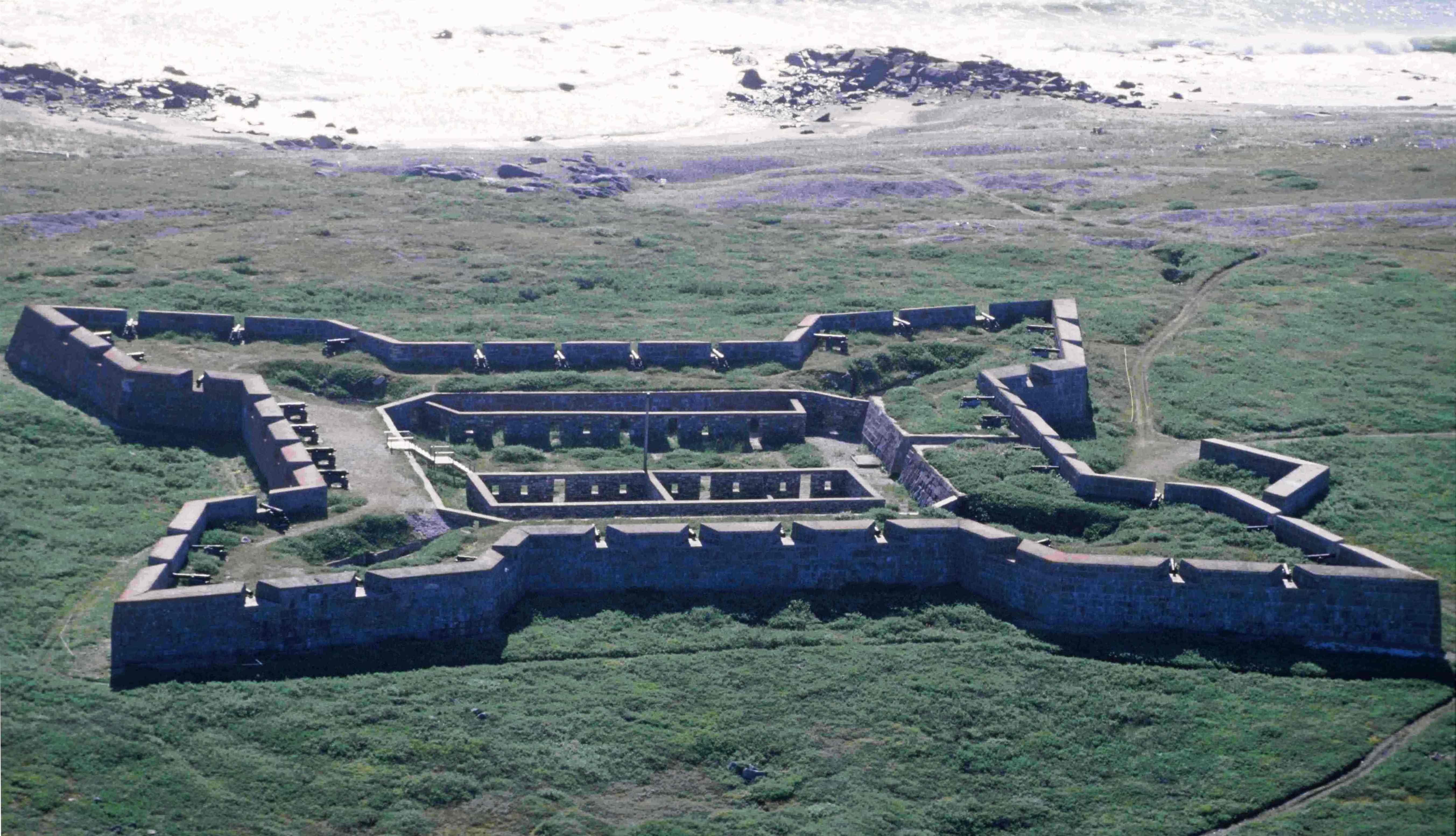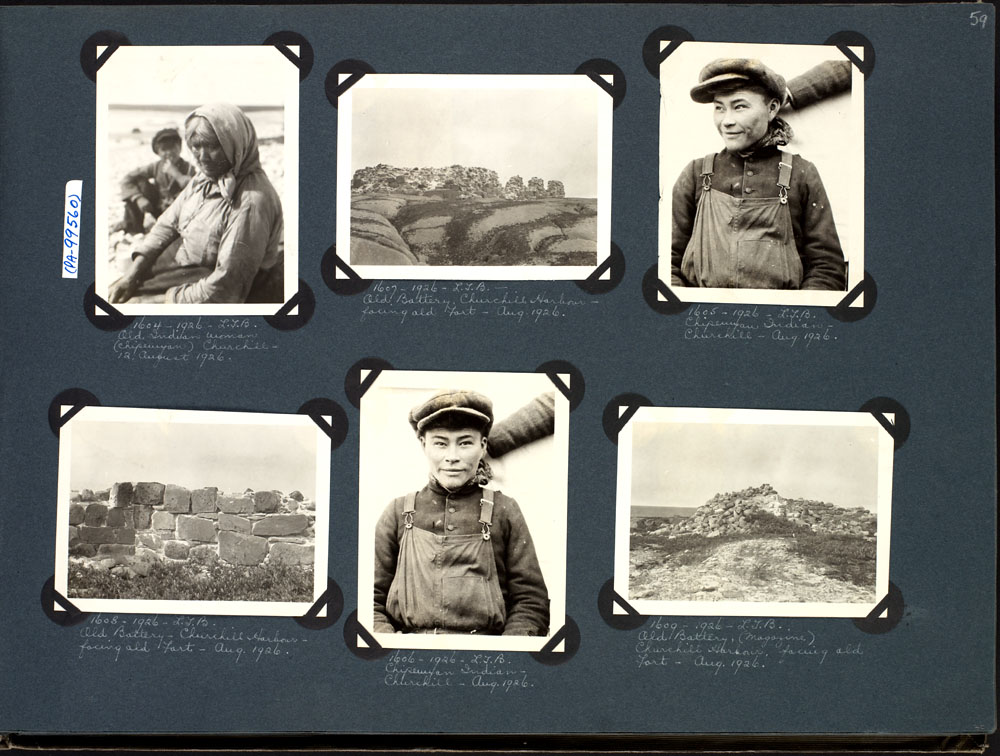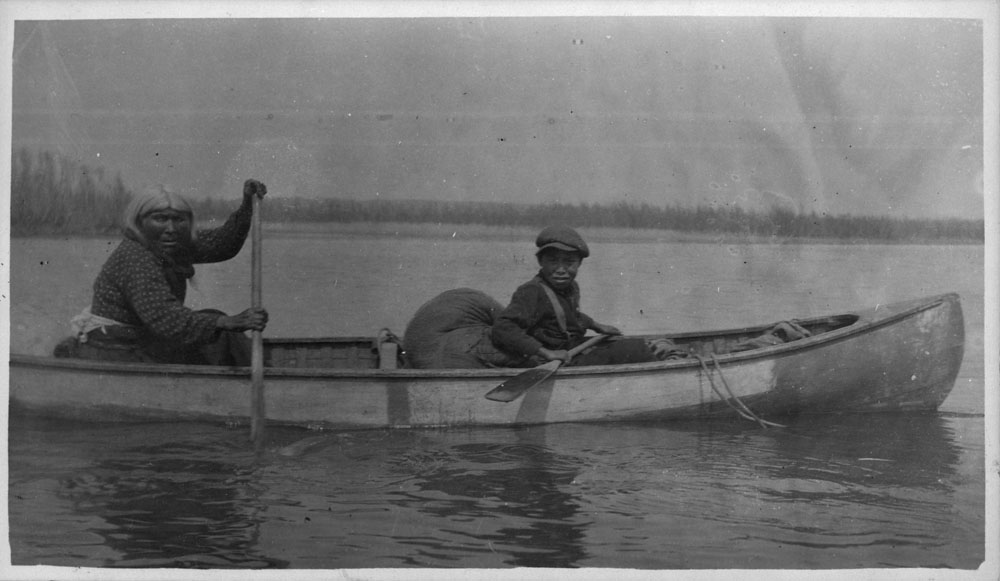|
Churchill, Manitoba
Churchill is a town in northern Manitoba, Canada, on the west shore of Hudson Bay, roughly from the Manitoba–Nunavut border. It is most famous for the many polar bears that move toward the shore from inland in the autumn, leading to the nickname "Polar Bear Capital of the World" that has benefited its burgeoning tourism industry. Geography Churchill is located on Hudson Bay, at the mouth of the Churchill River on the 58th parallel north, far above most Canadian populated areas. Churchill is far from any other towns or cities, with Thompson, approximately to the south, being the closest larger settlement. Manitoba's provincial capital, Winnipeg, is approximately south of Churchill. While not part of the city, Eskimo Point and Eskimo Island are located across river with the former site of the Prince of Wales Fort. History A variety of nomadic Arctic peoples lived and hunted in this region. The Thule people arrived around the year 1000 from the west, the ancestors of the presen ... [...More Info...] [...Related Items...] OR: [Wikipedia] [Google] [Baidu] |
List Of City Nicknames In Canada
This is a list of nicknames and slogans of cities in Canada. Many Canadian cities and communities are known by various aliases, slogans, sobriquets, and other nicknames to the general population at either the local, regional, national, or international scales, often due to marketing campaigns and widespread usage in the media. Some nicknames are officially adopted by municipal governments, tourism boards, or chambers of commerce, while others are unofficial, and some are current while others are antiquated. Some nicknames are positive, while others are derisive, disparaging or derogatory. City nicknames can help establish a civic identity, promote civic pride, build civic unity, market the community, and attract residents and businesses. They are also believed to have economic value, though their economic value is difficult to measure. Cities by province Alberta * Brooks **"Alberta's Centennial City" — Brooks became a city in 2005, Alberta's centennial year. * Cal ... [...More Info...] [...Related Items...] OR: [Wikipedia] [Google] [Baidu] |
Tourism
Tourism is travel for pleasure or business; also the theory and practice of touring (other), touring, the business of attracting, accommodating, and entertaining tourists, and the business of operating tour (other), tours. The World Tourism Organization defines tourism more generally, in terms which go "beyond the common perception of tourism as being limited to holiday activity only", as people "travelling to and staying in places outside their usual environment for not more than one consecutive year for leisure and not less than 24 hours, business and other purposes". Tourism can be Domestic tourism, domestic (within the traveller's own country) or International tourism, international, and international tourism has both incoming and outgoing implications on a country's balance of payments. Tourism numbers declined as a result of a strong economic slowdown (the late-2000s recession) between the second half of 2008 and the end of 2009, and in consequence of t ... [...More Info...] [...Related Items...] OR: [Wikipedia] [Google] [Baidu] |
Jens Munk
Jens Munk (3 June 1579 – June 1628) was a Danish-Norwegian navigator and explorer. He entered into the service of King Christian IV of Denmark-Norway and is most noted for his attempts to find the Northwest Passage. Early life Jens Munk was born on his father's estate Barbu at Arendal in the county of Aust-Agder, Norway. His father, Erik Munk, had received several fiefs for his achievements in the Northern Seven Years' War. However, his father had a reputation for his brutal rule over his estates which led to several trials. In 1585, he was deposed and imprisoned at Dragsholm Castle in Denmark. At the age of eight, Munk moved to Aalborg with his mother, who became a housekeeper in the home of her husband's sister who was married to the city's mayor. Career In 1591, at the age of twelve, Munk went to Oporto in Portugal where he worked for the shipping magnate Duart Duez. The following year he sailed with a Dutch convoy to Bahia. Off the Brazilian coast, the convoy was ... [...More Info...] [...Related Items...] OR: [Wikipedia] [Google] [Baidu] |
Cree
The Cree ( cr, néhinaw, script=Latn, , etc.; french: link=no, Cri) are a Indigenous peoples of the Americas, North American Indigenous people. They live primarily in Canada, where they form one of the country's largest First Nations in Canada, First Nations. In Canada, over 350,000 people are Cree or have Cree ancestry. The major proportion of Cree in Canada live north and west of Lake Superior, in Ontario, Manitoba, Saskatchewan, Alberta and the Northwest Territories. About 27,000 live in Quebec. In the United States, Cree people historically lived from Lake Superior westward. Today, they live mostly in Montana, where they share the Rocky Boy Indian Reservation with Ojibwe (Chippewa) people. The documented westward migration over time has been strongly associated with their roles as traders and hunters in the North American fur trade. Sub-groups / Geography The Cree are generally divided into eight groups based on dialect and region. These divisions do not necessarily r ... [...More Info...] [...Related Items...] OR: [Wikipedia] [Google] [Baidu] |
Chipewyan
The Chipewyan ( , also called ''Denésoliné'' or ''Dënesųłı̨né'' or ''Dënë Sųłınë́'', meaning "the original/real people") are a Dene Indigenous Canadian people of the Athabaskan language family, whose ancestors are identified with the Taltheilei Shale archaeological tradition. They are part of the Northern Athabascan group of peoples, and come from what is now Western Canada. Terminology The term ''Chipewyan'' (ᒌᐘᔮᐣ) is a Cree exonym meaning ''pointed hides'', referring to the design of their parkas. The French-speaking missionaries to the northwest of the Red River Colony referred to the Chipewyan people as Montagnais in their documents written in French. Montagnais simply means "mountain people" or "highlanders" in French and has been applied to many unrelated nations across North America over time. For example the Neenolino Innu of northern Quebec are also called "Montagnais". Demographics Chipewyan peoples live in the region spanning the w ... [...More Info...] [...Related Items...] OR: [Wikipedia] [Google] [Baidu] |
Dene
The Dene people () are an Aboriginal peoples in Canada, indigenous group of First Nations in Canada, First Nations who inhabit the northern Boreal forest of Canada, boreal and Arctic regions of Canada. The Dene speak Northern Athabaskan languages. ''Dene'' is the common Athabaskan word for "people". The term "Dene" has two usages. More commonly, it is used narrowly to refer to the Athabaskan speakers of the Northwest Territories and Nunavut in Canada, especially including the Chipewyan (Denesuline), Tlicho (''Dogrib''), Yellowknives (T'atsaot'ine), Slavey people, Slavey (Deh Gah Got'ine or Deh Cho), and Sahtu (the Eastern group in Jeff Leer's classification; part of the Northwestern Canada group in Keren Rice's classification). However, it is sometimes also used to refer to all Northern Athabaskan speakers, who are spread in a wide range all across Alaska and northern Canada. The Southern Athabaskan speakers, however, also refer to themselves by similar words: Navajo people, D ... [...More Info...] [...Related Items...] OR: [Wikipedia] [Google] [Baidu] |
Inuit
Inuit (; iu, ᐃᓄᐃᑦ 'the people', singular: Inuk, , dual: Inuuk, ) are a group of culturally similar indigenous peoples inhabiting the Arctic and subarctic regions of Greenland, Labrador, Quebec, Nunavut, the Northwest Territories, and Alaska. Inuit languages are part of the Eskimo–Aleut languages, also known as Inuit-Yupik-Unangan, and also as Eskaleut. Inuit Sign Language is a critically endangered language isolate used in Nunavut. Inuit live throughout most of Northern Canada in the territory of Nunavut, Nunavik in the northern third of Quebec, Nunatsiavut and NunatuKavut in Labrador, and in various parts of the Northwest Territories, particularly around the Arctic Ocean, in the Inuvialuit Settlement Region. With the exception of NunatuKavut, these areas are known, primarily by Inuit Tapiriit Kanatami, as Inuit Nunangat. In Canada, sections 25 and 35 of the Constitution Act of 1982 classify Inuit as a distinctive group of Aboriginal Canadians wh ... [...More Info...] [...Related Items...] OR: [Wikipedia] [Google] [Baidu] |
Thule People
The Thule (, , ) or proto-Inuit were the ancestors of all modern Inuit. They developed in coastal Alaska by the year 1000 and expanded eastward across northern Canada, reaching Greenland by the 13th century. In the process, they replaced people of the earlier Dorset culture that had previously inhabited the region. The appellation "Thule" originates from the location of Thule (relocated and renamed Qaanaaq in 1953) in northwest Greenland, facing Canada, where the archaeological remains of the people were first found at Comer's Midden. The links between the Thule and the Inuit are biological, cultural, and linguistic. Evidence supports the idea that the Thule (and also the Dorset, but to a lesser degree) were in contact with the Vikings, who had reached the shores of Canada in the 11th century as part of Norse colonization of North America. In Viking sources, these peoples are called the ''Skrælingjar''. Some Thule migrated southward, in the "Second Expansion" or "Second Phase". ... [...More Info...] [...Related Items...] OR: [Wikipedia] [Google] [Baidu] |
Circumpolar Peoples
Circumpolar peoples and Arctic peoples are umbrella terms for the various Indigenous peoples of the Arctic. Prehistory The earliest inhabitants of North America's central and eastern Arctic are referred to as the Arctic small tool tradition (AST) and existed c. 2500 BC. AST consisted of several Paleo-Eskimo cultures, including the Independence cultures and Pre-Dorset culture.Gibbon, pp. 28–31 The Dorset culture (Inuktitut: ''Tuniit'' or ''Tunit'') refers to the next inhabitants of central and eastern Arctic. The Dorset culture evolved because of technological and economic changes during the period of 1050–550 BC. With the exception of the Quebec/Labrador peninsula, the Dorset culture vanished around 1500 AD. Dorset/Thule culture transition dates around the 9th–10th centuries. Scientists theorize that there may have been cross-contact of the two cultures with sharing of technology, such as fashioning harpoon heads, or the Thule may have found Dorset remnants and adapted the ... [...More Info...] [...Related Items...] OR: [Wikipedia] [Google] [Baidu] |
Prince Of Wales Fort
The Prince of Wales Fort is a historic bastion fort on Hudson Bay across the Churchill River from Churchill, Manitoba, Canada. History The European history of this area starts with Henry Hudson sailing into Hudson Bay in 1610. The area was recognized as important in the fur trade and of potential importance for other discoveries. The fort is built in a star shape. Original (wood) fort This fort began as a log fort built in 1717 by James Knight of the Hudson's Bay Company (HBC) and was originally called the Churchill River Post. In 1719, the post was renamed Prince of Wales Fort. It was located on the west bank of the Churchill River to protect and control the HBC's interests in the fur trade. Construction of the present stone fort The original wooden fort was replaced by a massive stone fort, probably to abide by the Royal Charter which required that Rupert's Land should be fortified. Construction of this fort was started in 1731 near what was then called Eskimo Point. I ... [...More Info...] [...Related Items...] OR: [Wikipedia] [Google] [Baidu] |
Arviat
Arviat (, syllabics: ᐊᕐᕕᐊᑦ; formerly called Eskimo Point until 1 June 1989) is a predominantly Inuit hamlet located on the western shore of Hudson Bay in the Kivalliq Region of Nunavut, Canada. Arviat ("place of the bowhead whale") is derived from the Inuktitut word ''arviq'' meaning "Bowhead whale". Earlier in history, its name was ''Tikirajualaaq'' ("a little long point"), and ''Ittaliurvik'', ("a place where the people make tents"). Demographics In the 2021 Canadian census conducted by Statistics Canada, Arviat had a population of 2,864 living in 632 of its 694 total private dwellings, a change of from its 2016 population of 2,657. With a land area of , it had a population density of in 2021. Community Arviat is the southernmost community on the Nunavut mainland and is close to the geographical centre of Canada. In Arviat, Inuktitut and English are primarily spoken, having the third largest population in Nunavut, behind Rankin Inlet and Iqaluit. From the 20 ... [...More Info...] [...Related Items...] OR: [Wikipedia] [Google] [Baidu] |
Winnipeg
Winnipeg () is the capital and largest city of the province of Manitoba in Canada. It is centred on the confluence of the Red and Assiniboine rivers, near the longitudinal centre of North America. , Winnipeg had a city population of 749,607 and a metropolitan population of 834,678, making it the sixth-largest city, and eighth-largest metropolitan area in Canada. The city is named after the nearby Lake Winnipeg; the name comes from the Western Cree words for "muddy water" - “winipīhk”. The region was a trading centre for Indigenous peoples long before the arrival of Europeans; it is the traditional territory of the Anishinabe (Ojibway), Ininew (Cree), Oji-Cree, Dene, and Dakota, and is the birthplace of the Métis Nation. French traders built the first fort on the site in 1738. A settlement was later founded by the Selkirk settlers of the Red River Colony in 1812, the nucleus of which was incorporated as the City of Winnipeg in 1873. Being far inland, the local cl ... [...More Info...] [...Related Items...] OR: [Wikipedia] [Google] [Baidu] |







.jpg)
.png)